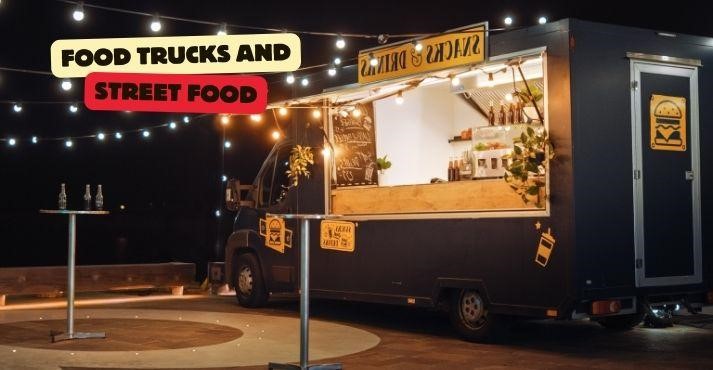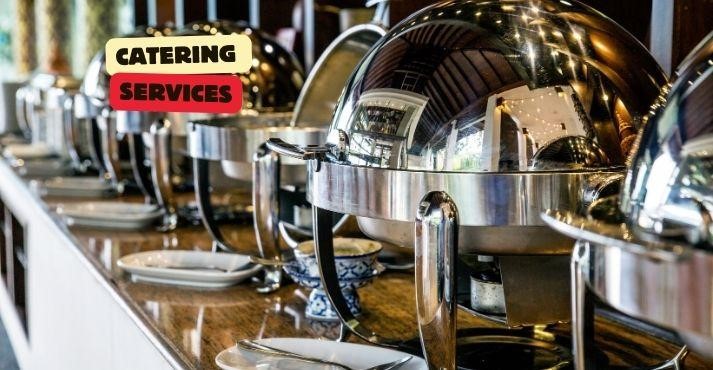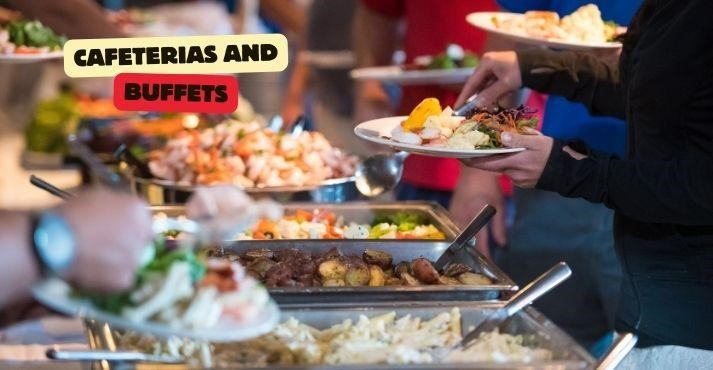Consumers are seeking out new channels and formats for food and beverage purchases. Food service operators are looking for new models for an added level of convenience to reach consumers.
Foodservice channels refer to places where food is provided to consumers outside the home. Channels of food service include hotels, food trucks, restaurants, catering services, cafeterias, etc.
This blog will explore 8 types of food service channels and what makes them different.
8 Types of Food Services Channels
There are many types of food service categories, such as restaurants, from upscale fine dining establishments to catering services. We’ll explore 8 of the most popular types of food service channels and what makes them unique.
1. Hotel and Resort Dining

Hotel and resort refers to a full-service lodging establishment that provides guests with various recreational activities.
Within these settings, guests can enjoy international cuisines in fine-dining restaurants, indulge in themed buffets, or enjoy casual poolside snacks. Some hotels boast signature chef-driven restaurants, emphasizing culinary innovation.
Room service provides convenience, enabling guests to dine in the comfort of their rooms. Additionally, hotels often host vibrant breakfast spreads, accommodating diverse dietary needs.
Moreover, the immersive experience extends to bars and lounges, offering crafted cocktails and scenic views.
2. Restaurants and Cafés

From the refined elegance of fine dining establishments serving haute cuisine to the casual charm of neighborhood cafés offering comforting fare, the restaurant industry is changing to meet consumer preferences and trends.
Restaurants and cafes offer a diverse menu, with ambiance ranging from bustling urban eateries to countryside restaurants. Service styles range from formal, attentive fine dining to the relaxed, counter-ordering system of many modern cafés.
3. Fast Food and Quick-Service Restaurants (QSR)

Fast-food establishments and Quick Service Restaurants (QSRs) focus on food service operations on the rapid pace of modern dining, convenience, and standardized menus.
Often utilizing efficient assembly lines and simplified menus, these establishments offer drive-thru services and online food ordering systems, catering to the on-the-go lifestyle.
Key characteristics of the fast food and quick service restaurants include:
- Restaurants focus on speed of service over the quality of food or ingredients.
- Self-service and counter service are usually used in place of total service.
- Takeout and drive-through options are typical.
- Most QSRs work with a smaller selection of menu items.
Moreover, these establishments serve food that’s easy to prepare and cook ahead of time. QSRs benefit from high customer turnover rates and have lower operating costs than full-service restaurants.
4. Food Trucks and Street Food

Food trucks and street food vendors refer to portable food booths or food carts for immediate consumption. These culinary entrepreneurs often experiment with bold, unexpected combinations, from gourmet tacos to artisanal desserts.
Whether parked at a bustling corner or participating in food festivals, these mobile kitchens have become integral to the modern food service industry.
Food trucks have expanded their menus to include diverse international cuisines. This trend has led to exciting creations that tantalize taste buds.
Moreover, these food trucks and street food vendors adopt sustainable practices, use locally sourced ingredients and eco-friendly packaging, and reduce food waste. Beyond satisfying appetites, food trucks and street vendors add vibrancy to city streets and contribute to cultural diversity.
5. Catering Services

Catering services refer to a company that provides food and beverages for events, such as weddings, parties, and corporate meetings. Catering companies usually hire chefs to create food or buy food from a vendor or third party to deliver to the customers.
From weddings to corporate meetings, these professional catering businesses manage everything from menu planning and food preparation to on-site service and cleanup.
The following are different caterer types and what they do.
- Wedding Caterers: Specialize in crafting personalized wedding menus, offering exquisite cuisine and seamless service to enhance the couple’s special day.
- Corporate Caterers: Provide professional catering services for business events, meetings, and conferences, ensuring quality meals that align with corporate preferences and standards.
- Social Event Caterers: Tailor menus for various social occasions, from birthdays to anniversaries, delivering diverse and delicious food options that complement the event’s atmosphere.
- Concession Caterers: Serve at public events and venues, offering quick and convenient fare such as snacks, beverages, and light meals to attendees and spectators.
Moreover, catering services deliver customer’s catering needs within a deadline and budget.
6. Online Food Delivery Platforms

According to Statistica, the global revenue of the Online Food Delivery market is expected to reach US$1.42tn in 2025. It is expected to exhibit a compound annual growth rate (CAGR 2025-2028) of 8.02%, resulting in a projected market volume of US$1.79 trillion by 2028.
Ordering food online involves a customer searching for a restaurant and being directed to a website or app to place an order.
Delivery platforms make their money through five key revenue streams: restaurant commission fees, customer delivery fees, customer service fees, in-app advertising, and tips.
The key to the rise of this purchasing method is the convenience it creates for consumers. Real-time tracking, digital menus, and secure payment options further streamline the dining experience.
7. Cafeterias and Buffets

The self-service model of cafeterias and buffets lets diners control their dining experience. Characterized by a layout where customers serve themselves, these establishments offer a variety of pre-prepared dishes displayed in a serving area.
Customers can choose portions and combinations, promoting flexibility and customization. Cafeterias and buffet formats are known for their efficiency, minimizing wait times and allowing individuals to pace their meals.
Cafeterias often feature a streamlined, fast-paced atmosphere, while buffets encourage a more leisurely approach.
8. Meal Kit Services

Meal kit services refer to a subscription-based food service model where a company sends customers pre-portioned or partially prepared meals. Meal kit services are gaining popularity amongst single-person households and those with a busy schedule and extended office hours.
These services streamline the cooking process, eliminating the need for extensive meal planning and grocery shopping. Each kit includes precisely measured ingredients, reducing food waste and ensuring an efficient cooking experience.
Accompanied by step-by-step instructions, these services cater to new cooks and busy individuals seeking convenience.
Additionally, meal kits contribute to a sustainable food ecosystem as they minimize excess ingredients and packaging. With the rise of these services, home cooks can enjoy restaurant-quality meals with the satisfaction of preparing them themselves.
Conclusion
From the fast-paced efficiency of quick-service restaurants to the mobile creativity of food trucks, each channel caters to specific preferences and occasions.
The increasing number of different types of food service channels reflects changing consumer behaviors and technological advancements.
So, if you are an entrepreneur or a food service operator looking to expand your business, choosing among the types of service is all up to you, but make sure it fits the needs of your target market.













